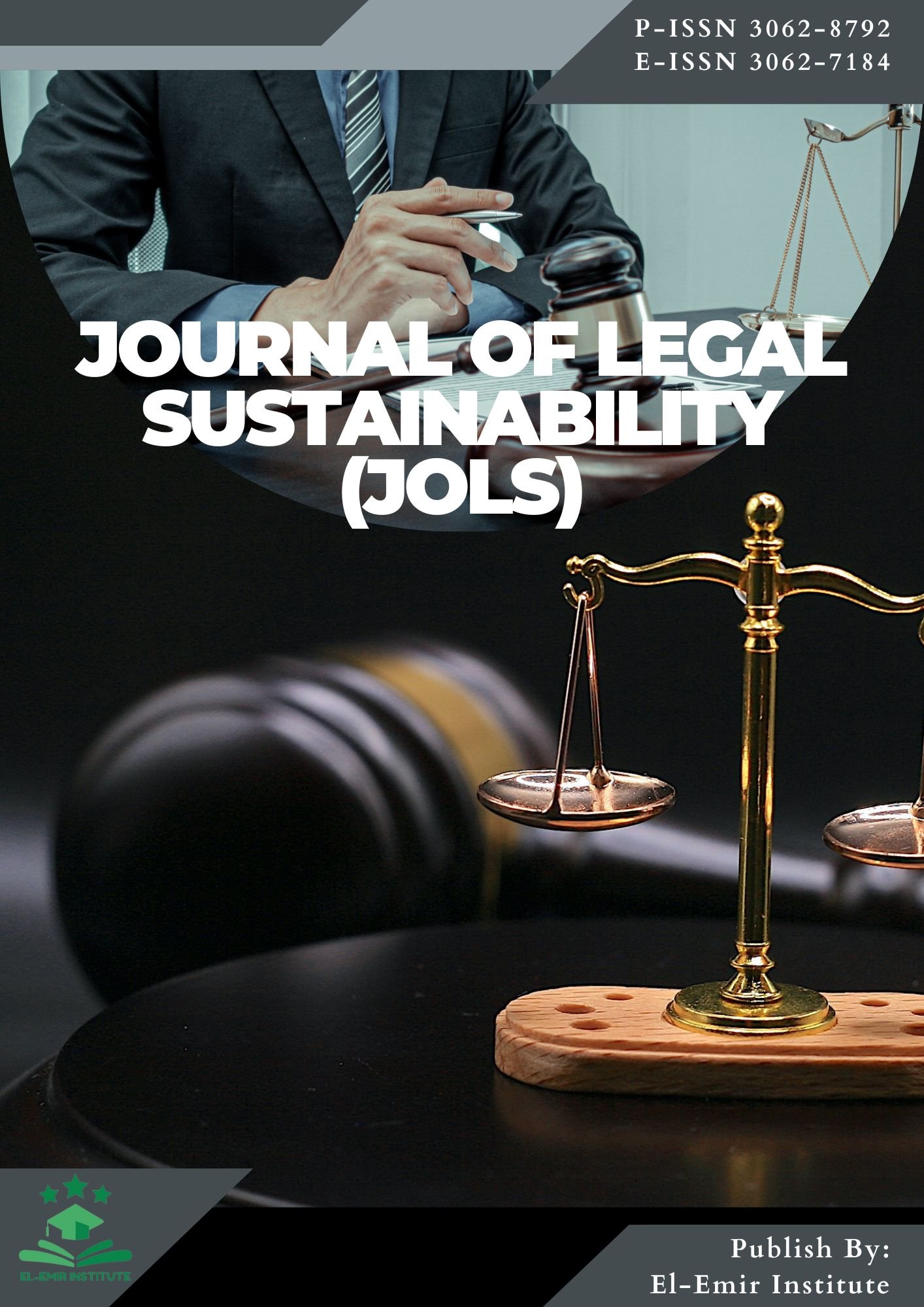Perlindungan Anak dalam Perspektif Hukum Islam: Tinjauan atas Hak dan Kewajiban Orang Tua
DOI:
https://doi.org/10.63477/jols.v2i2.240Keywords:
Child Protection, Islamic Law, Rights, Responsibilities, ParentsAbstract
This study aims to analyze the concept of child protection from the perspective of Islamic law, with a focus on the rights and responsibilities of parents toward their children. Child protection is a fundamental aspect in Islam, encompassing the fulfillment of physical, emotional, and educational needs, as well as protection from violence and neglect. The method used in this study is a qualitative approach through library research, analyzing verses from the Qur’an, the sayings of the Prophet (hadith), and the views of classical and contemporary scholars related to children's rights and parental responsibilities. The results of the study show that Islam places great emphasis on child protection as a trust that must be safeguarded. Children's rights in Islam include the right to life, the right to a clear lineage, the right to education, affection, financial support, and protection from physical and psychological abuse. Parents have both moral and religious obligations to ensure these rights are fulfilled. This study recommends strengthening the role of the family as the foundation of child protection within the framework of Islamic values, as well as fostering synergy between sharia principles and the positive legal system in order to establish a holistic and sustainable protection system for children.
Downloads
References
Hanafi, A. (2004). Pengantar dan Sejarah Hukum Islam, Jakarta: Bulan Bintang, 1995. Albert Hourani, Sejarah Bangsa-Bangsa Muslim, Terjemahan, Bandung: Mizan.
Harahap, F. S. D. (2017). Reintegrasi Agama dan Sains Bidang Kesehatan Reproduksi: Studi Kasus Kehamilan Tidak Diingankan di Padangsidimpuan, Tangerang Selatan dan DKI Jakarta.
Huda, M., & Thoif, T. (2016). Konsep Keluarga Sakinah, Mawaddah, wa Rahmah Prespektif Ulama Jombang. Jurnal Hukum Keluarga Islam, 1(1), 68–82.
Nurrohmah, N. (2022). Penanaman Nilai Karakter Peduli Lingkungan Melalui Pemanfaatan Lingkungan Dan Bahan Bekas Sebagai Alat Peraga Edukatif. Al-Athfal: Pendidikan Anak Usia Dini, 2(02), 13–29.
Qardhawi, Y. (2019). Halal Haram dalam islam. Era Adicitra Intermedia.
Rafiqah, L., Johan, S. M., & Nelli, J. (2020). Konsep Ibnu Qayyim Al-Jauziyah Tentang Perlindungan Hak Anak Dalam Keluarga. Jurnal Al Himayah, 4(1), 14–35.
Rahmawati, N. R., Oktaviani, V. D., Wati, D. E., Nursaniah, S. S. J., Anggraeni, E., & Firmansyah, M. I. (2021). Karakter religius dalam berbagai sudut pandang dan implikasinya terhadap model pembelajaran Pendidikan Agama Islam. Ta’dibuna: Jurnal Pendidikan Islam, 10(4), 535–550.
Rokhim, A. (2022). Ekosistem Pendidikan dalam Perspektif Al-Qur’an. Institut PTIQ Jakarta.
Sholihah, H. (2018). Perbandingan Hak-Hak Anak Menurut Undang-Undang Nomor 23 Tahun 2002 Tentang Perlindungan Anak Dan Hukum Islam. Al-Afkar, Journal For Islamic Studies, 88–112.
Trimaya, A. (2018). Pengaturan Perlindungan Khusus Bagi Anak Korban Kekerasan dalam Undang-Undang Nomor 35 Tahun 2014 Tentang Perubahan atas Undang-Undang Nomor 23 Tahun 2002 Tentang Perlindungan Anak (Arrangements For Child Protection As Victim of Violence In Law Number 35 Of 2014 on the Revision of Law Number 23 Of 2002 on Child Protection). Jurnal Legislasi Indonesia, 12(3).
Widayati, T. (2018). Peran Orang Tua dalam Mendidik Anak Perempuan Perspektif Pendidikan Islam. UIN Raden Intan Lampung.
Zuhaily, W. (1985). Al-Fiqh Al-Islāmy Wa ‘adillatuhu Jilid 2. Damascus: Dar Al-Fikr, 1, 944.
Downloads
Published
How to Cite
Issue
Section
License
Copyright (c) 2025 Lailan Rafiqah, Parlindungan Simbolon, M Sulaiman Ridwan

This work is licensed under a Creative Commons Attribution-ShareAlike 4.0 International License.


















